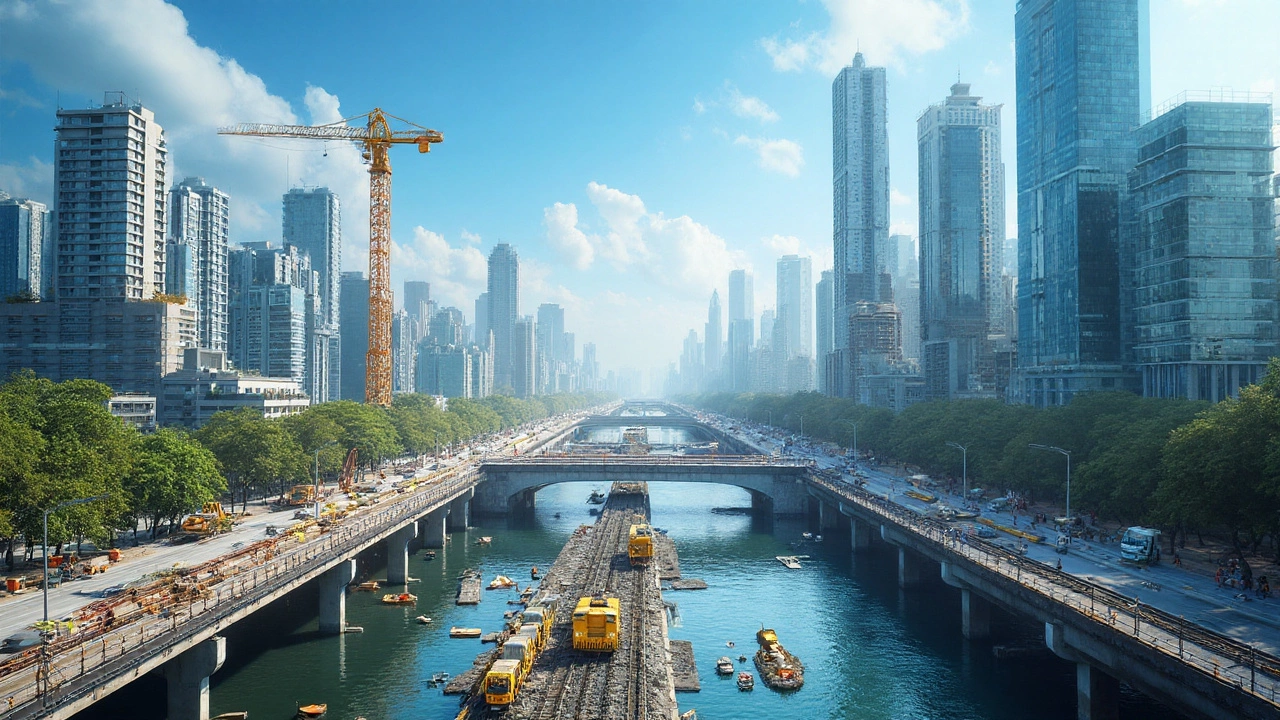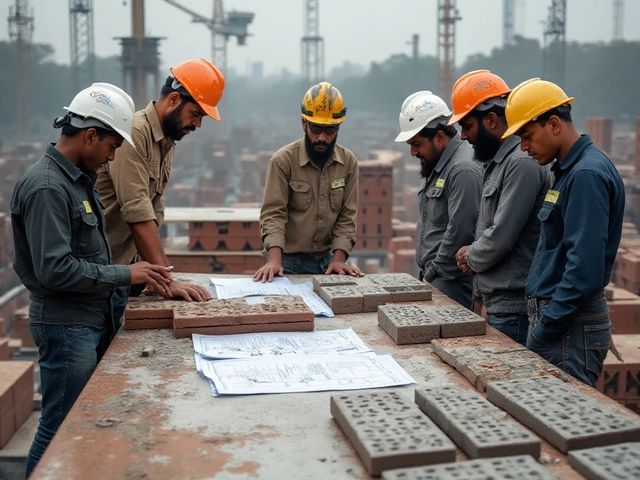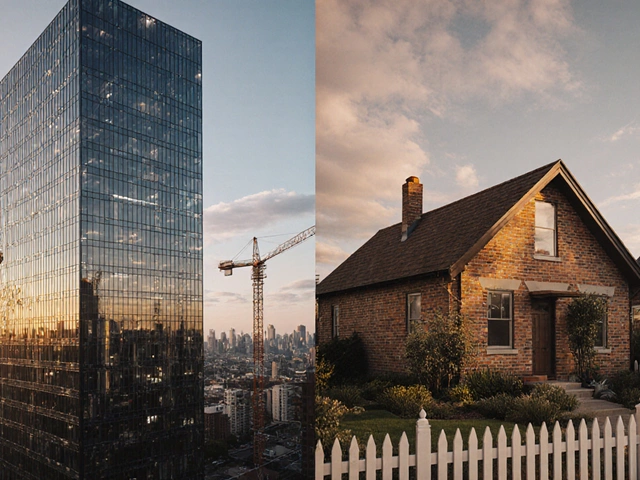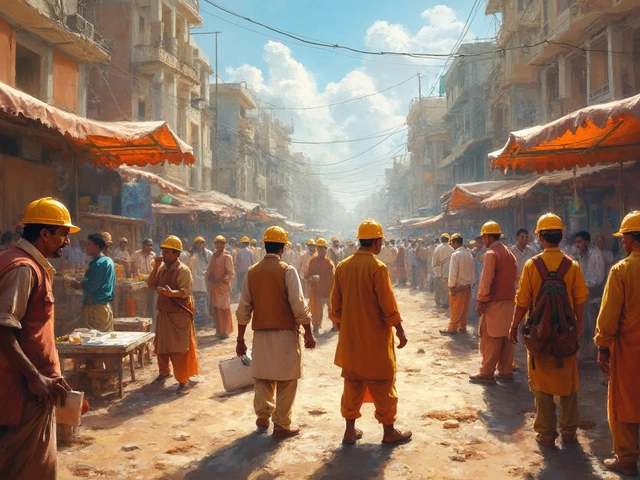You might think mixing up "civil" and "commercial" is no big deal. Turns out, it matters a lot—especially when projects get expensive, legal, and occasionally messy. Imagine standing on a site where concrete mixers roar and scaffolding climbs ten stories high. Would you know if you’re on a civil or a commercial project? Companies, home-buyers, and even construction workers get these mixed up. The words roll off the tongue together, but the stories behind them couldn’t be more different. Happens to me too, even after years of navigating city streets with my two kids in tow. Whether it’s a motorway widening outside Manchester or a shiny new shopping centre rising by the tram stop, knowing the distinction can actually save you a headache—or a lawsuit.
Untangling Civil and Commercial: What Do They Really Mean?
So, are civil and commercial just two names for the same thing? Not even close. Let’s cut through the legal fog; civil construction is all about society’s backbone—think bridges, roads, water supply networks. It covers projects that serve the public as a whole. Take the M60 ring road circling Manchester, for example. No one “owns” the benefit exclusively; the whole city relies on it. Civil work is about infrastructure that keeps daily life humming along smoothly—even if drivers don’t appreciate it during rush hour.
Commercial construction? That’s another beast entirely. Here, we’re talking about places where business happens: office buildings, shopping centres, hotels, and basically any workplace built for profit. Unlike civil projects funded (at least partly) by taxpayers and designed for everyone, commercial construction is where private money calls the shots and the aim is usually to make more money. Picture the Trafford Centre on a Saturday—shops, restaurants, cinemas—all bustling as people hand over their cash. That’s commercial to the core.
It’s not just about what gets built, but how projects are planned, funded, and delivered. Civil work leans heavy on government contracts, regulations, and layers of oversight. There are public bids, red tape, and strict rules for safety and environmental impact. When you see those long-winded signs on the A6 about “improvement works for the benefit of all residents,” that’s classic civil.
Commercial sites move fast, sometimes at breakneck speed. Developers want profits yesterday, so timelines are brutal and mishaps cost big. Investors push to open new supermarkets or office blocks on schedule, knowing every day of delay slices into expected returns. The risk for lawsuits or insurance claims can actually be higher on commercial projects—especially when businesses fight over losses from missed openings as happened with the Manchester Arndale post-flooding.
Then there’s the legal side—“civil” also appears in legal settings, muddying things even more. Civil law isn’t about bridges at all; it’s about private disputes, not criminal offenses. A civil case might settle an argument over a contract for a housing tower or hotel. So, keep this in mind: just because a project is “civil” in legal language doesn’t mean you’re pouring concrete for the next motorway.
Here’s a nugget: according to a 2023 study by the UK Construction Leadership Council, confusion about project type causes up to 12% of all contract disputes in the sector! That’s a lot of claims and wasted money because teams mix up the two types of work on paperwork and contracts.

Practical Differences: Planning, Delivery, and Everyday Impacts
Now, how do these differences show up on the ground? It starts before a single brick is laid. Planning for civil projects has a lot more public scrutiny—think community consultations, environmental studies, traffic management plans. Builders need permission not only from city officials but often from entire neighbourhoods or special interest groups. When they built the Manchester Airport Relief Road, there were months of heated debate over wildlife, pollution, and the impact on local businesses. Plans sat on desks for years before work even started.
For commercial jobs, approval still matters, but money speaks loudest. If a hotel meets the local council’s building codes, and the developer can afford the permits and taxes, work starts quickly. Sure, neighbours can protest, but a restaurant chain with deep pockets is pretty hard to stop once it sets its sights.
Keep an eye on funding, too. Civil projects pull from government budgets, so you get those infamous delays every time a funding round gets cut—like the HS2 high-speed rail saga across the UK, which has stopped and started more times than my son changes his mind about what he wants for dinner. Commercial projects usually see money flowing in from investors, banks, or big companies, sometimes pooled from international sources. This means commercial sites can dry up fast if the business case wobbles, as happened during the COVID-19 pandemic. Plenty of half-built towers still haunt city skylines as reminders.
As for design and construction methods, civil and commercial use different rules. Civil work means massive groundwork, specialty engineering, working outdoors through British weather, and prepping the job for the long haul—think 50-year guarantees, not just pretty facades. Commercial projects push for flexibility (retail units can change hands or get gutted in a year), and the interiors are the focus. People care if the lifts run smoothly or if WiFi works, not if the rebar under the floor is spotless.
Who builds these things? Civil jobs are often tackled by giants—Balfour Beatty, Costain, Kier—who handle both the planning and the politics with whole departments for legal wrangling and community engagement. Commercial projects attract big players too, but you’ll see smaller developers in the mix—family firms doing shopping parades, franchised outfits kitting out shops. The supply chains are different, the subcontractors specialize in different things, and even hiring practices shift. My mate who does brickwork says he prefers commercial jobs because he can finish in weeks, not waste months navigating paperwork.
But here’s where it gets interesting: sometimes, a single project sits right on the border. Hospitals, for instance, serve the public but might have commercial shops on site. Stadiums are public-facing but built for private football clubs and business sponsors. You’ll even see contracts split in two—one strand for roads and pipes (civil), another for offices and shops (commercial).
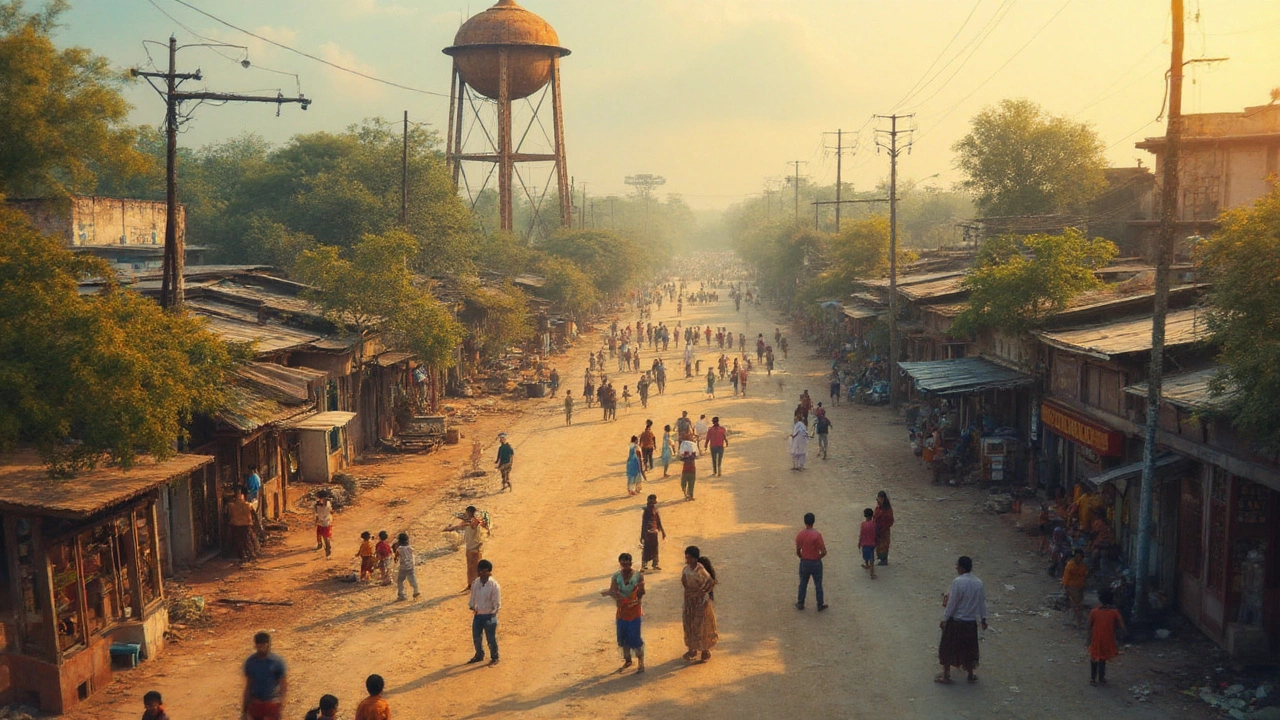
Telling Them Apart: Real-Life Tips, Legal Risks, and Why It Matters
So, how do you spot the difference—especially when work overlaps? Here’s my checklist if you’re standing at a muddy job site or reading a contract at your kitchen table:
- Purpose: Will everyone in town benefit (civil)? Or is it built to make money for one group or business (commercial)?
- Funding: Government grant, tax money, lotteries? Likely civil. Private investment, bank loans, retail company? Usually commercial.
- Public Access: Can any person walk in, like a park or bridge? Or do you need to buy something to enter (like a shopping mall)?
- Contract Terms: Scan for government oversight, public procurement rules, or references to public safety obligations—that’s the civil zone. Commercial jobs run on private agreements, custom risk sharing, and lots of insurance fine print.
- Timeline and Flexibility: Civil jobs often face delays tied to budget votes, elections, and storms. Commercial work demands speed and flexibility—if a café chain wants new outlets in five cities by December, they need builders who can keep up.
The legal side makes the difference even bigger if there’s a problem. Let’s say a project gets delayed or something fails. Civil contracts answer to whole communities, with courts taking “the public good” into account. If a new bypass collapses, everyone feels the pain—even those who never use it. For commercial projects, disputes are between businesses, insurance fights, or landlord-tenant squabbles. Penalties and compensation play out behind closed doors, unless it really blows up (like when Westfield sued contractors during the Stratford City boom).
Here’s a tip not everyone knows: when a project switches midstream—from a public hospital wing to a privately run clinic, say—contracts must change to match. Mess this up, and both sides risk legal headaches and months of arguments. Always double-check the project’s type before signing on.
Real-world impacts can be huge: If you’re a tradesperson, knowing the difference guides you to the right projects—civil jobs offer stability but loads of paperwork, while commercial sites pay fast but can dry up suddenly. If you’re a property investor, you want the right insurance and legal advice for the specific type. And if you’re just curious about what’s going on behind that fence down the road, now you’ll have more than a guess.
So, back to the main question: is civil the same as commercial? No. Each world has its own rules, risks, and rewards. If you can spot the difference, you’re better equipped to make smart choices—whether that’s picking a contract, asking your local councillor about a city project, or helping your kids make sense of all those cranes and diggers on the horizon.
